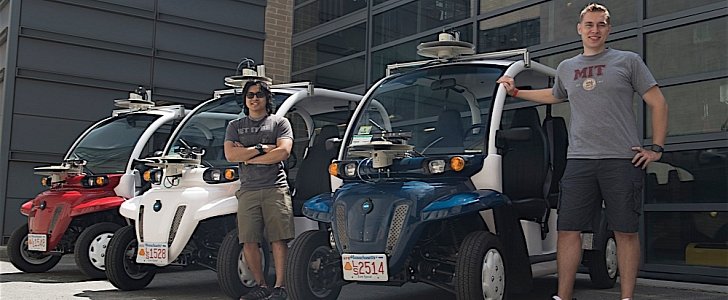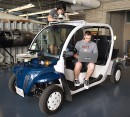Ford and MIT have announced a new research project, which will focus on autonomous and on-demand electric shuttles.
The project has not been assigned a name, but it is as complex as they get. Researchers will use LIDAR sensors and video cameras to route electric shuttles in areas where they predict the highest demand for rides.
Cars will be guided using data-driven models, and both institutions will benefit from the knowledge gained from navigating a vehicle in densely crowded pedestrian areas.
The on-demand electric car shuttles will be operated on demand, and will be found on the campus of the Massachusetts Institute of Technology, which located in Cambridge, Massachusetts.
While they will be available for order through an app, the vehicles will monitor pedestrian flow to predict where their next passengers will be before requesting them.
Ford will gain extensive knowledge in the field of autonomous cars and pedestrian detection, while MIT will have access to tried algorithms used to measure pedestrian flow. Since it can calculate the movement of the pedestrians in an area, it can also count the number of humans in a space so that it could be eventually used for security purposes.
The first riders of the service will come from a group of students and faculty members, and the first trips will be made in September. Each member of the team will be able to hail one of the three vehicles to their location using a mobile app, and the self-driving electric car will take them to the designated destination on campus.
Instead of cars destined for the open road, the team employed electric vehicles similar in size and capacity to golf carts so that they can navigate campus sidewalks with ease. Most importantly, they must not interfere with traditional pedestrian traffic. The latter is a fancy term for people walking on the sidewalk.
Even if the project will have the vehicles available starting this September, the team from MIT has been testing them for five months so that they can document pedestrian flow at certain times and in specific points on campus.
As Ford and MIT explain, LIDAR is more accurate than GPS and regular cameras, and it is already viewed as a required feature of future autonomous vehicles.
Cars will be guided using data-driven models, and both institutions will benefit from the knowledge gained from navigating a vehicle in densely crowded pedestrian areas.
The on-demand electric car shuttles will be operated on demand, and will be found on the campus of the Massachusetts Institute of Technology, which located in Cambridge, Massachusetts.
While they will be available for order through an app, the vehicles will monitor pedestrian flow to predict where their next passengers will be before requesting them.
Ford will gain extensive knowledge in the field of autonomous cars and pedestrian detection, while MIT will have access to tried algorithms used to measure pedestrian flow. Since it can calculate the movement of the pedestrians in an area, it can also count the number of humans in a space so that it could be eventually used for security purposes.
The first riders of the service will come from a group of students and faculty members, and the first trips will be made in September. Each member of the team will be able to hail one of the three vehicles to their location using a mobile app, and the self-driving electric car will take them to the designated destination on campus.
Instead of cars destined for the open road, the team employed electric vehicles similar in size and capacity to golf carts so that they can navigate campus sidewalks with ease. Most importantly, they must not interfere with traditional pedestrian traffic. The latter is a fancy term for people walking on the sidewalk.
Even if the project will have the vehicles available starting this September, the team from MIT has been testing them for five months so that they can document pedestrian flow at certain times and in specific points on campus.
As Ford and MIT explain, LIDAR is more accurate than GPS and regular cameras, and it is already viewed as a required feature of future autonomous vehicles.



